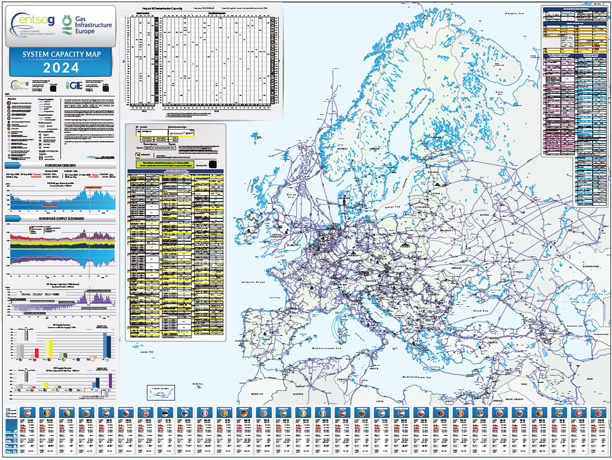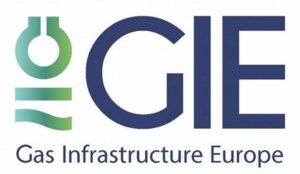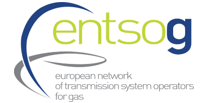- Our DNA
- Innovation Lab
- Publications
- Energy Transparency
- Press Corner
- Events
- Contact
- Subscribe
- Membernet
- My account
- Search
- Follow us at LinkedIn
- Follow us on Twitter
- Follow us on Instagram
January 11, 2024
Today, ENTSOG and GIE have jointly published their newly named System Capacity Map, for the first time combining the information from the former System Development and Transmission Capacity maps.
The System Capacity map illustrates the latest European gas infrastructure and capacities, providing useful gas market data for enhanced transparency. The 2022-2023 historical data on gas demand and supply at European level from the latest Summer and Winter Review Reports are presented aggregated in the form of charts. The map also presents import and transmission capacity data as of 1 January 2024. Information regarding the gas storage fill rate and LNG capacities shown were obtained from the GIE AGSI and ALSI platforms respectively.

Piotr Kuś, ENTSOG General Director, commented, “This reference map consists of a new combined layout of gas infrastructure and detailed capacity data to provide an efficient and centralised source of information for European and non-European stakeholders alike. The System Capacity map will be published on a yearly basis and can be used as a complementary tool when referring to the ENTSOG Seasonal Outlooks’ methodology and existing infrastructure capacity considered for TYNDP.”
Boyana Achovski, GIE Secretary General, reminded: “Nurturing efficiency, fairness, and stability, data transparency is the bedrock of a robust energy market. It not only attracts investment and supports regulations but also sparks innovation, facilitating global trade. Essential for energy security, transparent information fuels the transformation needed to meet EU climate goals. Merging System Development and Transmission Capacity maps was a logical step in gas infrastructure’s commitment to European economy and energy resilience.”
It is available in print and digital formats.
Editorial notes

Gas Infrastructure Europe (GIE) is the association representing the interests of European gas infrastructure operators. GIE members are active in transmission, storage and regasification via LNG terminals of renewable and low-carbon gases, including natural gas and hydrogen. Gathering around 70 industry entities from 27 European countries, GIE perfectly embodies the multiple transitional decarbonisation pathways of the EU regions. The association’s vision is that by 2050, the gas infrastructure will be the backbone of the new innovative energy system, allowing European citizens and industries to benefit from a secure, efficient and sustainable energy supply.
Media inquiries & interviews:
Gabrielle Lelievre, GIE Communication Manager
gabrielle.lelievre@gie.eu | +32 478 78 34 83 | www.gie.eu

The European Network of Transmission System Operators for Gas (ENTSOG) was founded in line with Regulation (EC) 715/2009 and has played a key role in facilitating integration of the European gas markets, ensuring technical interoperability and providing security of supply by gas infrastructure planning. Looking forward, ENTSOG is contributing to the net-zero decarbonisation by 2050, in particular, by the integration of renewable and low carbon gases via future-proof gas transmission pipelines, in line with the EU energy and climate goals.
Media inquiries & interviews:
Carmel Carey, External Communication Manager
carmel.carey@entsog.eu | www.entsog.eu





































































